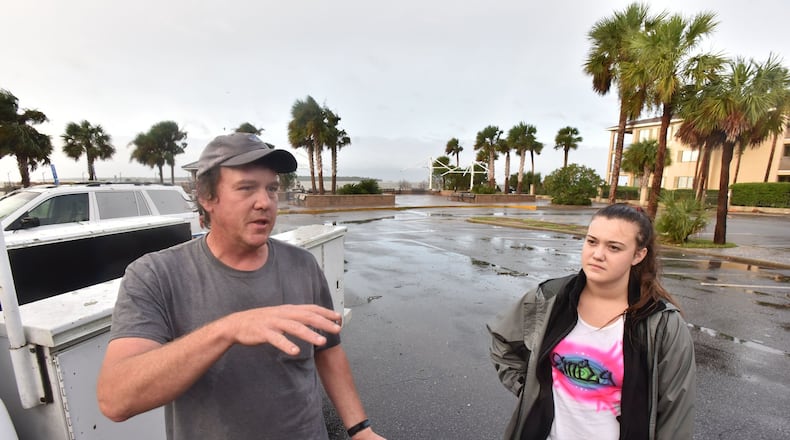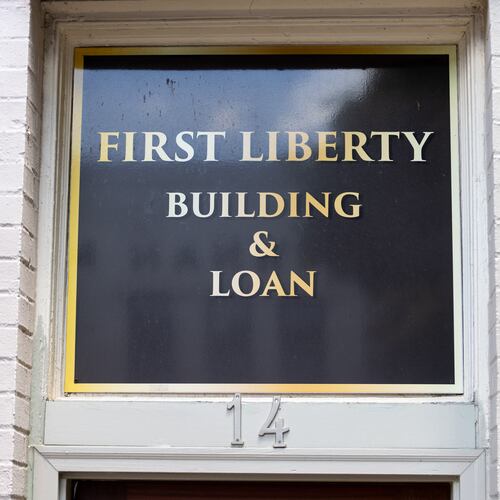How you can help
The Salvation Army: To donate money to help people affected by Hurricane Matthew visit disaster.salvationarmyusa.org or call (800) SAL-ARMY. Not currently accepting in-kind donations from the general public for disaster relief operations.
Red Cross: Donate online at redcross.org or text MATTHEW to 90999 to make a $10 donation. For information about volunteering, Augusta-area residents can call the Augusta Red Cross at (706) 724-8481 or visit www.redcross.org/support and click on "Volunteering."
Augusta-Richmond County Emergency Management: Accepting donations at Old Fire Station #7, 2163 Central Ave., Augusta. Most needed items include T-shirts, socks, underwear and adult diapers. Items should be new and unopened.
Travel information and more
Information on Hurricane Matthew, including evacuation area map: gema.ga.gov
Travel information: 511ga.org
Shelter information: godawgs.gema.ga.gov/shelters
Savannah — Hurricane Matthew ripped across the Georgia coast and killed at least four people as it toppled trees and flooded roads and homes, officials said, before storming the Carolinas.
Once a Category 4 monster, Matthew spared Georgia a bit of its fury, staying just offshore and diminishing in strength as it lashed the coast Friday and into Saturday. It then made landfall in South Carolina.
But it still left hundreds of thousands of customers without power at its peak and many thousands of evacuees were still unable to reach their homes late Saturday because of impassable roads or unsafe conditions.
The weakening hurricane that hit Charleston Saturday — flooding many of its streets — has left at least 10 people dead in the U.S. and more than 800 in Haiti.
In Georgia, Chatham County Commission Chairman Albert Scott said Saturday afternoon two people on islands near Savannah died from factors related to the hurricane. The cause of death was known for one. An as-yet-unidentified man was crushed when a tree crashed onto his home, according to Chatham County Coroner Dr. William Wessinger.
Two other men died in Bulloch County to the northwest of Savannah, one when his car crashed into a fallen tree and a second when two trees fell on his home, the Associated Press reported.
Chatham County Manager Lee Smith on Saturday called Matthew “the worst storm to hit Chatham County in more than 100 years.”
Officials warned the affects of some infrastructure damage could be felt for months.
At a news conference Saturday afternoon, Chatham officials said 119,000 customers in the county were still without power. Trees had toppled across a number of key roads and flooding closed other thoroughfares. The leafy and moss-dripped boulevards of Savannah had debris strewn about and a number of homes were breached by fallen limbs and uprooted trees.
“Wherever you are at, please stay there,” Scott said. “If you are not in Savannah do not return.”
Scott and other officials urged residents who rode out the storm to stay in their homes and do not venture out. A countywide curfew was in place from 7 p.m. Saturday until 7 a.m. Sunday, though some cities in Chatham had stronger restrictions.
Three key bridges — Savannah’s well known Talmadge Memorial Bridge and the Bull River and Thunderbolt bridges — remained closed.
A large portion of I-16, the freeway connecting Savannah with Macon and ultimately Atlanta remained closed to eastbound traffic. Emergency officials said they hoped to have a plan for the re-entry of evacuees available on Sunday and would distribute that information through the media, social media and other channels.
Hurricane holdouts
In Georgia, after sunup Saturday, the “hurricane holdouts” — the people who ignored evacuation orders and stayed put — ventured out to see what Matthew had wrought. They found a lot of torn-up trees, downed power lines and standing water, but apparently minimal structural damage.
Gov. Nathan Deal called up 1,000 additional Georgia National Guard troops to assist state and local authorities, bringing to 2,000 the number of guardsmen now activated.
Emergency crews began early Saturday assessing the damage from Hurricane Matthew. But it’s still too early to know the extent of the destruction or how long recovery efforts may take, Deal said during a press conference Saturday morning.
Local officials warned the thousands of residents who had evacuated to give authorities time to assess damage before returning. About 220,000 homes and businesses were still left without power as of Saturday evening, according to Georgia Power.
“We are still in a dangerous situation,” Deal said. “Please be patient a little while longer.”
As of Saturday afternoon, about 6,000 people remained in more than two dozens Red Cross shelters across the state. A spokeswoman for the aid agency said it expects many people to stay in shelters for the rest of the weekend and possibly into early next week.
‘Floating on the water’
Utility crews were dealing with mass power outages across Chatham County as numerous trees snapped power lines. Police were at major entry points to the county to manage entry.
Along I-95, dozens of trees were down partially blocking lanes of travel.
And in Savannah, a portion of President Street, which links to the highway to Tybee Island, was flooded with about six feet of water. One motorist Saturday attempted to cross the flooded road only to see their vehicle become submerged. A police officer on the scene said he did not know if the motorist was injured in the incident.
Billy Sears, part of a camp of about 10 homeless people, got flooded out of their refuge near President Street early Sunday morning as the storm waters rose. Sears said he and his friends didn’t know about the evacuation orders and tried to tough it out, until water started pouring into his tent.
“I was floating on the water on my air mattress in the tent,” he said.
Sears and some of his friends sought shelter in an abandoned apartment building. He said he’s not sure what happened to his four cats.
In downtown Savannah, where River Street and City Market would normally be bustling on a Saturday afternoon, shops and restaurants were closed.
Regina Gorrell, her boyfriend and two roommates ate a late McDonald’s lunch at City Market. The housemates rode out the storm, but their home was without power and suffered leaks in the doors, windows and ceiling.
“It’s literally a ghost town,” Gorrell said.
‘It could have been a lot worse’
Elsewhere in Georgia, coastal communities awoke Saturday to much of the same type of destruction that ripped through Savannah.
The bridge leading to Sea Island was shutdown and many of the aging trees lining Sea Island Road did not survive Hurricane Matthew.
Tim Buie was trying to get across the bridge and inspect landscaping for some homeowners on the island when he saw a Glynn County sheriff’s deputy blocking access to the span. He regretted seeing the fallen trees on the road leading up to the bridge.
“They exploded,” he said glumly.
On St. Simon’s Island, the storm knocked out power, sent trees crashing down on houses and over roads and flooded parking lots and yards. But those who rode out the storm on the island say they felt lucky, given the dire predictions they heard.
A convoy of county emergency workers was driving slowly across the island Saturday morning, surveying the damage and searching for people in need of help.
“We did well,” William Cook said as he snapped photos of a huge downed tree near Mallery Park. “It could have been a lot worse.”
Glynn County Commissioner Dale Provezano said he doesn’t expect islanders to get back home before Monday.
“Even after we open the Island, it could be days before you have power and water/sewer. So if you don’t have to be back, take another day or 2 of vacation,” Provezano wrote on Facebook.
But he had good news.
“After touring some of the Island, there is very little structural damage. Please take a deep breath. The fact the storm moved 45 miles off shore saved us from a lot of destruction,” he wrote.
He signed off as “a proud resident of St. Simons and Glynn County.”
Keep Reading
The Latest
Featured





